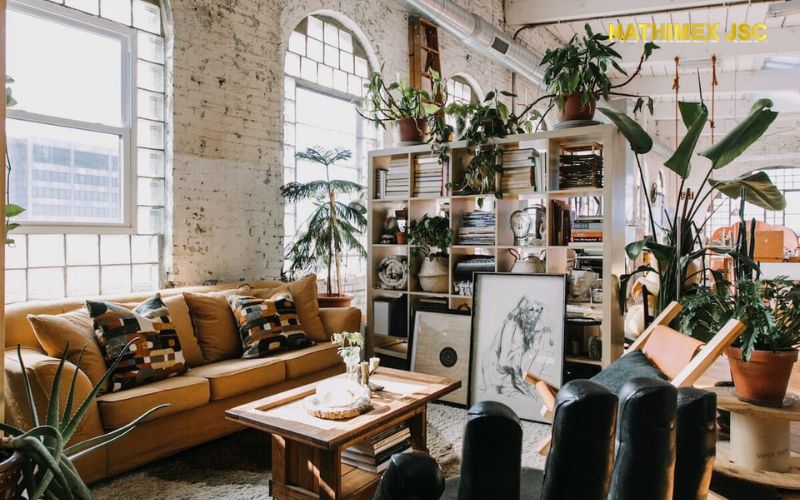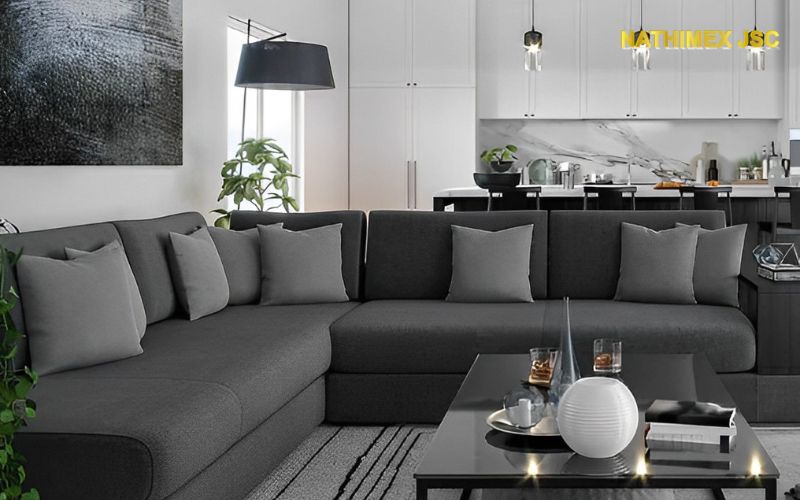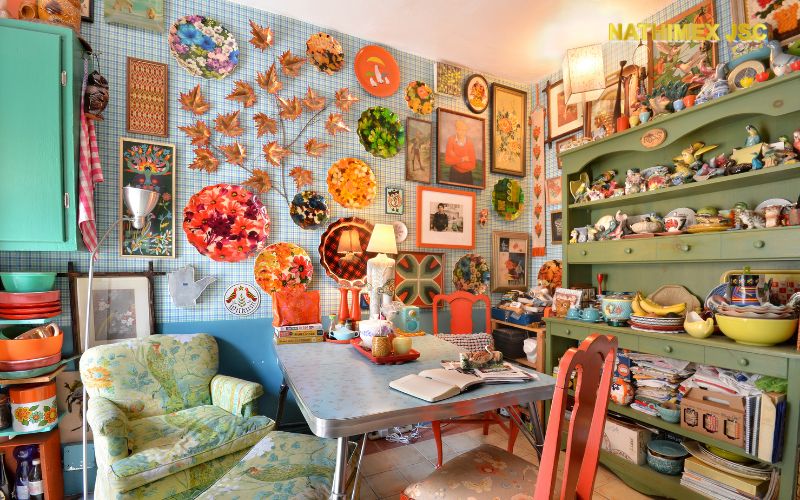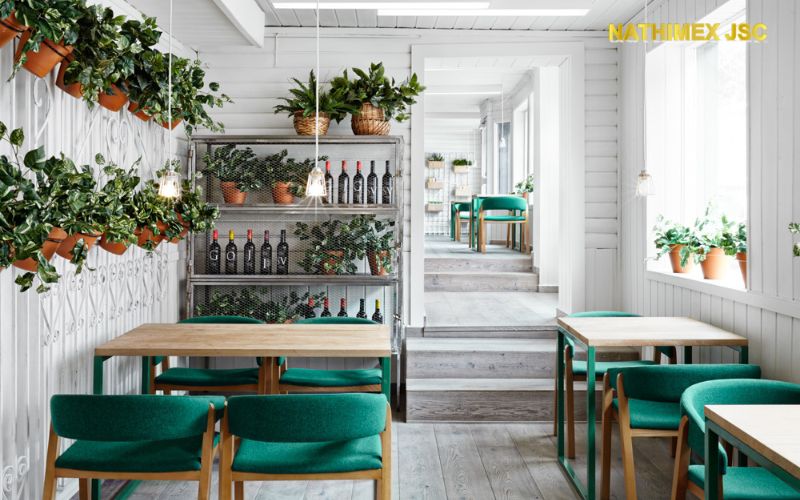Interior design trends are constantly evolving and changing around the world. As we continue to see shifts in lifestyle and values, the way we approach interior design has also changed. In this article, we will explore some of the most popular interior design trends that are currently in vogue around the world.
1. Bohemian
Bohemian style, also known as boho, has been making a comeback in interior design in recent years. This design style is characterized by its eclectic mix of patterns, colors, and textures, creating a warm, relaxed, and comfortable atmosphere in any space. The bohemian style is all about embracing your individuality and creativity while incorporating cultural and ethnic elements into your home. In this article, we will explore the bohemian style and how to incorporate it into your home.
Bohemian style is all about layering different patterns, textures, and colors to create a warm and inviting atmosphere. This style embraces natural materials such as wood, rattan, and wicker, and often features plants, flowers, and natural fabrics such as cotton, linen, and wool. The bohemian style also incorporates a mix of vintage and modern elements to create a unique and eclectic look.
One of the most striking features of bohemian style is the use of patterns. From paisley and floral to tribal and geometric patterns, the bohemian style embraces all kinds of patterns. However, it is important to balance the patterns by using neutral or solid colors to create a cohesive look.
The bohemian style also incorporates a mix of textures, such as knitted throws, woven rugs, and textured pillows. Layering textures is an essential part of creating a cozy and comfortable bohemian space.

Bohemian style is all about incorporating unique and personal pieces into your home. This design style encourages the use of vintage and antique pieces, such as a statement piece of furniture or a decorative piece of artwork. These elements add character and personality to your home and create a lived-in feel.
Bohemian style also embraces a variety of cultures and ethnic elements. You can incorporate cultural and ethnic pieces into your home by adding traditional textiles, ceramics, or artwork. These elements add depth and interest to your space, and also create a sense of connection to different cultures.
The bohemian style is all about embracing your individuality, creativity, and personality. This design style creates a warm, relaxed, and comfortable atmosphere by incorporating natural materials, patterns, and textures. Whether you incorporate vintage and antique pieces or cultural and ethnic elements, the bohemian style is all about creating a unique and eclectic look that reflects your personal style. So, unleash your creativity and let your inner bohemian shine in your home.
2. Minimalism
Minimalism is a popular design style that emphasizes simplicity, functionality, and the use of space. The minimalist style has become increasingly popular in recent years as more people seek to simplify their lives and create a more peaceful and serene living environment. In this article, we will explore the minimalist style in interior design and how it can be incorporated into your home.
Minimalism in interior design is all about creating a space that is clean, uncluttered, and free of unnecessary details. This design style emphasizes simplicity and functionality, which means that every element in the room should serve a purpose. In a minimalist space, less is definitely more.
One of the key features of minimalism in interior design is the use of neutral colors. Minimalist spaces are often dominated by whites, grays, and other neutral colors, which create a calm and serene atmosphere. The use of neutral colors also helps to create a sense of openness and spaciousness, which is important in a minimalist space.
In addition to using neutral colors, minimalist spaces also incorporate natural materials such as wood, stone, and concrete. These materials add texture and warmth to a minimalist space, without adding clutter or unnecessary details. The minimalist style also incorporates furniture with clean lines and simple shapes, which helps to create a streamlined and cohesive look.

Another important aspect of minimalist design in interior design is the use of lighting. Minimalist spaces often feature large windows or skylights that let in natural light, which creates a bright and airy atmosphere. Artificial lighting is also used to create a sense of warmth and comfort in the space, but it is kept simple and unobtrusive.
Finally, minimalist design in interior design involves the use of space in a thoughtful and intentional way. In a minimalist space, every element is carefully considered, and unnecessary details are eliminated. This creates a sense of balance and harmony in the space, which is essential for creating a peaceful and serene living environment.
Minimalism is a popular design style in interior design that emphasizes simplicity, functionality, and the use of space. By using neutral colors, natural materials, and furniture with clean lines, you can create a minimalist space that is both calming and inviting. Remember, the key to creating a successful minimalist space is to eliminate unnecessary details and to use space in a thoughtful and intentional way. With these tips in mind, you can create a minimalist space that is both beautiful and functional.
3. Maximalism
Maximalism is a bold and vibrant design style in interior design that embraces the use of bold colors, patterns, and textures to create a visually rich and layered space. This design style is all about celebrating individuality and expressing personal style through decor. In this article, we will explore maximalism style in interior design and how it can be incorporated into your home.
One of the defining features of maximalism style in interior design is the use of bold colors. In a maximalist space, the use of bold and bright colors is not only allowed, but it is celebrated. Colors such as hot pink, bright yellow, and deep purple are popular choices in maximalist spaces. These colors are often combined in unexpected ways, creating a visually stimulating and exciting space.
Another important aspect of maximalism style in interior design is the use of patterns. Maximalist spaces often incorporate a variety of patterns, such as stripes, florals, and geometric shapes. These patterns are often combined in unexpected ways, adding to the overall visual interest of the space. Mixing patterns can be intimidating, but in a maximalist space, the more patterns the better.
Texture is another important element in maximalism style in interior design. Textured elements such as velvet, silk, and faux fur are popular choices in maximalist spaces. These elements add depth and interest to the space, and can be used to create a sense of coziness and warmth.

Furniture in maximalist spaces is often large, bold, and statement-making. Pieces such as oversized sofas, dramatic lighting fixtures, and ornate mirrors are popular choices in maximalist spaces. These pieces are often combined in unexpected ways, creating a visually rich and layered space.
Finally, maximalism style in interior design is all about celebrating individuality and personal style. In a maximalist space, there are no rules. The space should reflect the personality and tastes of the individual, and should be a true reflection of their style and interests.
Maximalism style in interior design is a bold and vibrant design style that embraces the use of bold colors, patterns, and textures. By using unexpected color combinations, mixing patterns, incorporating textured elements, and embracing individuality, you can create a maximalist space that is both visually exciting and a true reflection of personal style. Remember, in a maximalist space, there are no rules, so don't be afraid to let your creativity and personal style shine through.
4. Sustainable and eco-friendly design
Sustainability and eco-friendliness have become increasingly important in interior design in recent years. As more people become environmentally conscious, they are looking for ways to reduce their carbon footprint and create a healthier living environment. Sustainable and eco-friendly design in interior design involves using materials, products, and practices that are environmentally friendly and have a minimal impact on the planet. In this article, we will explore sustainable and eco-friendly design in interior design and how it can be incorporated into your home.
The first step towards sustainable and eco-friendly design in interior design is to choose materials that are sustainable and have a minimal impact on the planet. This includes using natural materials such as wood, bamboo, and cork, and avoiding synthetic materials such as plastic, vinyl, and polyester. Natural materials are renewable and biodegradable, which makes them a better choice for the environment.

In addition to using natural materials, sustainable and eco-friendly design in interior design also involves using products that are energy-efficient and water-saving. This includes LED lighting, low-flow faucets, and toilets, and energy-efficient appliances. These products help to reduce energy consumption and water waste, which is better for the environment and can save you money on your utility bills.
Another important aspect of sustainable and eco-friendly design in interior design is to incorporate plants into your home. Plants not only add beauty and color to your space, but they also purify the air and promote a healthier living environment. Plants absorb carbon dioxide and release oxygen, which improves the air quality in your home.
Finally, sustainable and eco-friendly design in interior design involves using practices that reduce waste and promote recycling. This includes using reclaimed materials such as recycled wood and glass, and repurposing old furniture and accessories. By repurposing and recycling, you can reduce waste and give old items new life.
Sustainable and eco-friendly design in interior design is all about making choices that have a minimal impact on the planet and create a healthier living environment. By using natural materials, energy-efficient products, and incorporating plants into your home, you can create a sustainable and eco-friendly space that is both beautiful and functional. Remember, small changes can make a big difference, and by making sustainable choices in your interior design, you can help to create a better world for yourself and future generations.
